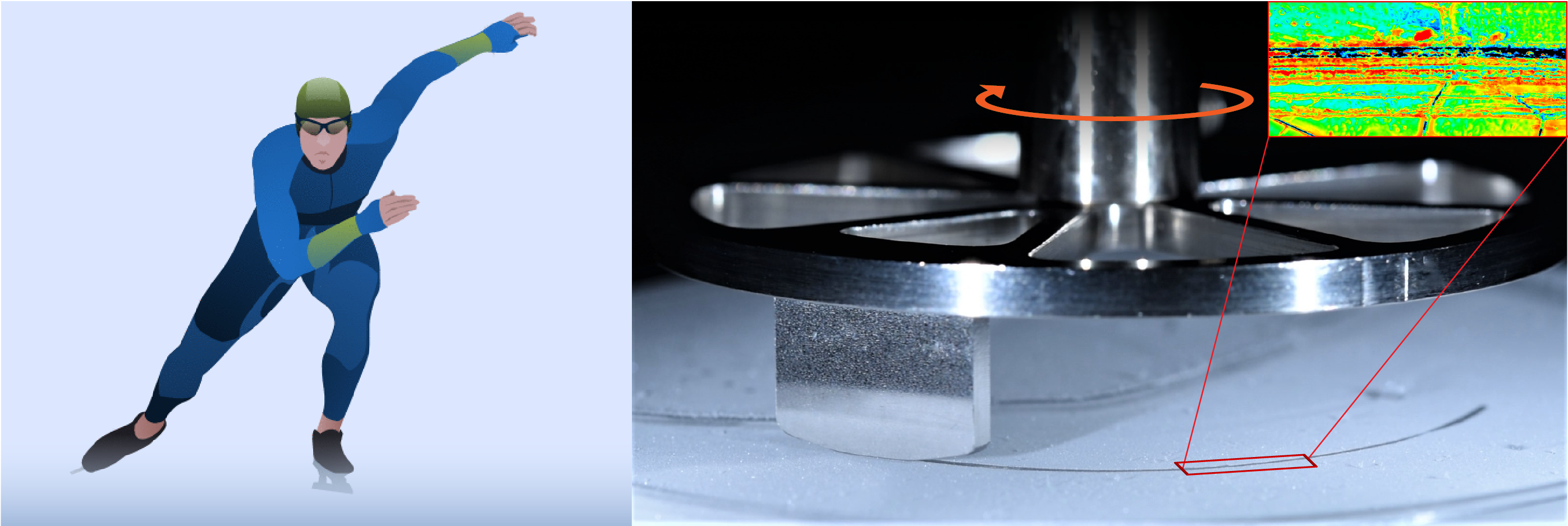
How Not to Slip on Ice This Winter?
For more than 150 years, scientists have argued over what makes ice slippery. Researchers from our group reported in an article in Physical Review X how temperature, pressure, and speed control ice friction. The slipperiness results from water molecules moving quickly at the very top of the ice, combined with ice’s exceptional hardness close to its melting point. High pressure or low temperature counteract this effect. So the higher the contact pressure, the less likely you are to slip and slide on ice. Read more in one of the following articles:
Article in Phys. Rev. X: Friction on Ice: How Temperature, Pressure, and Speed Control the Slipperiness of Ice
UvA: Why can we skate on ice?
Volkskrant: Waarom is ijs glad?
